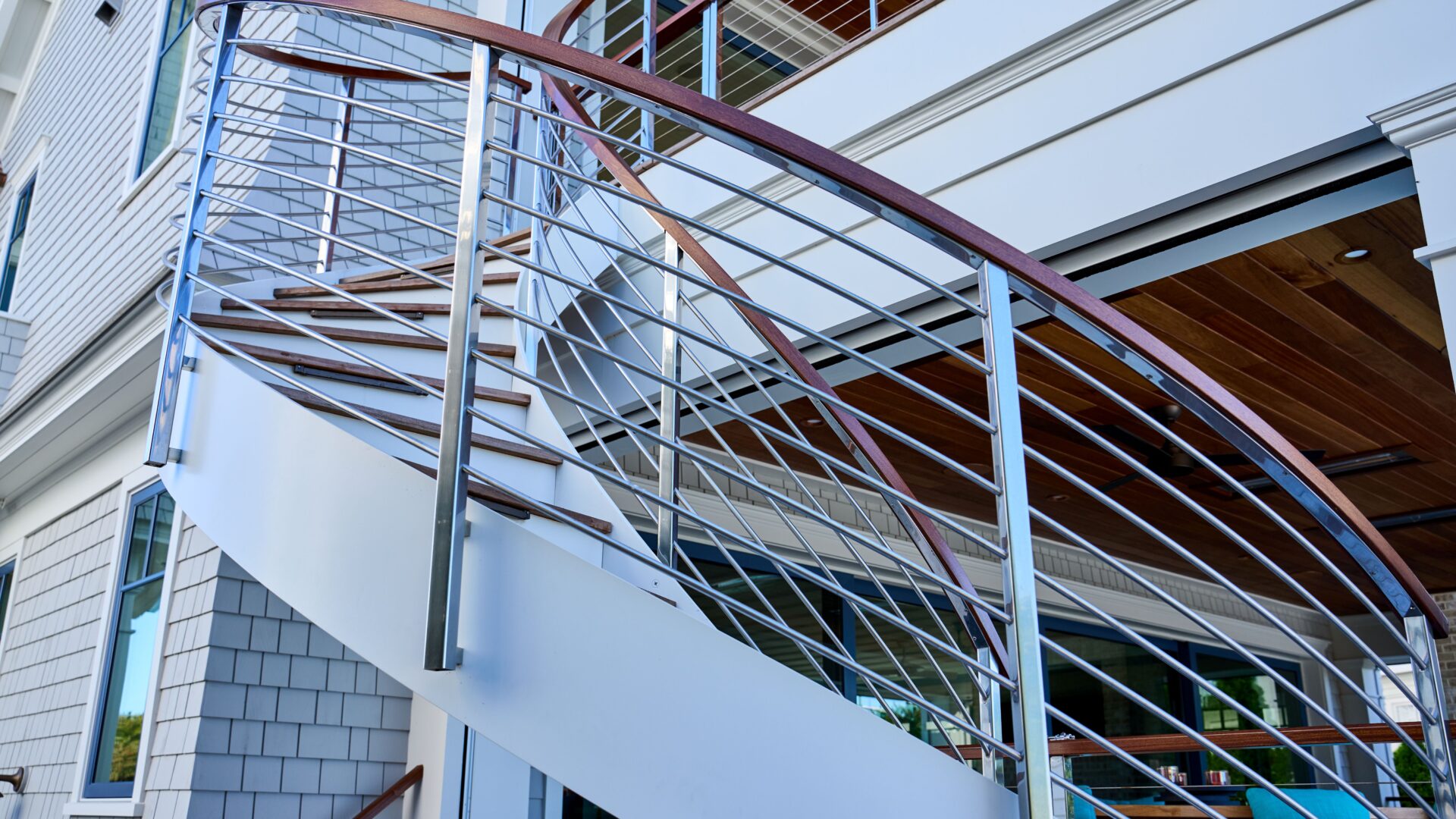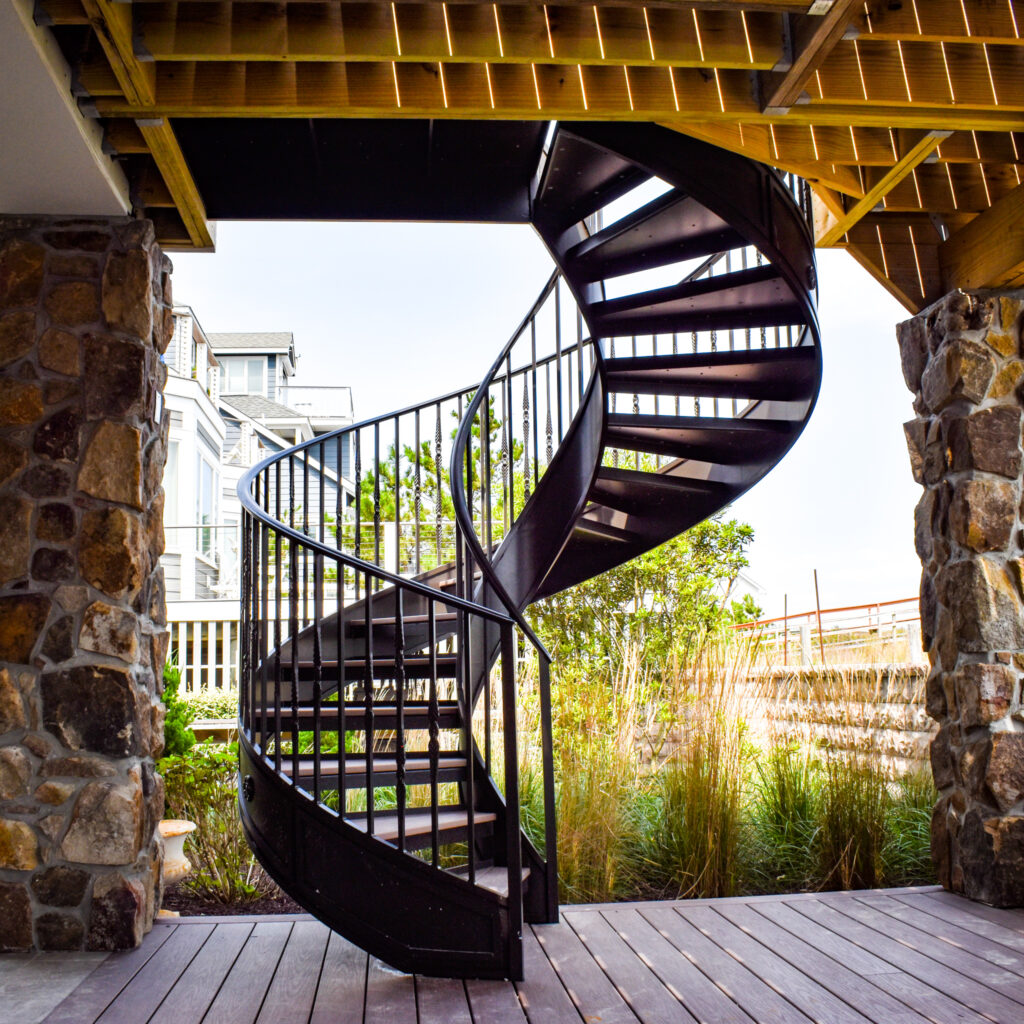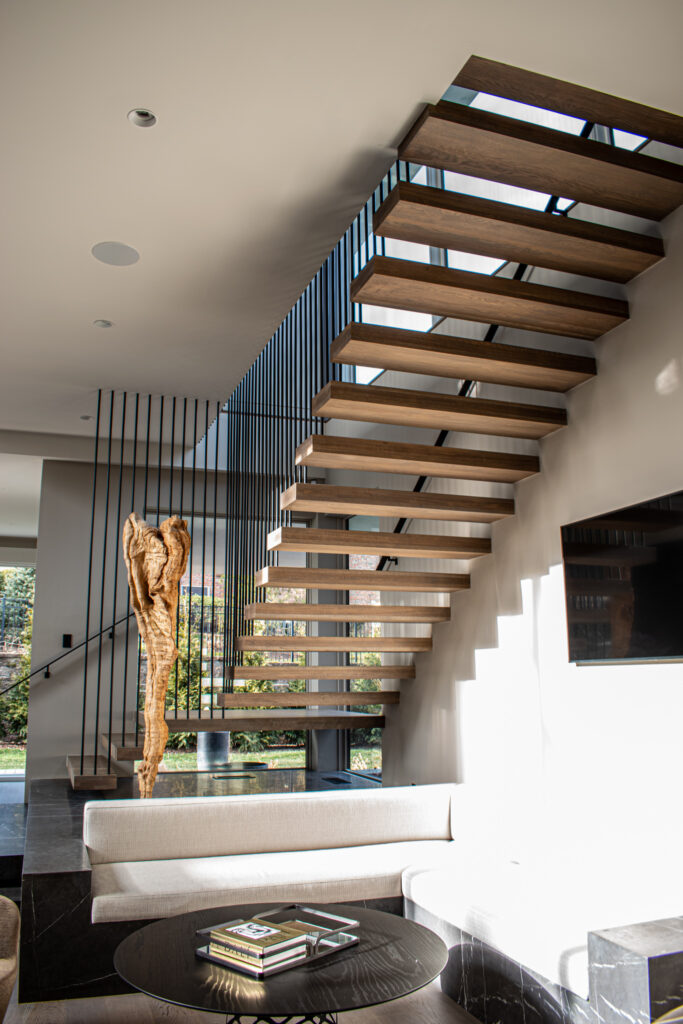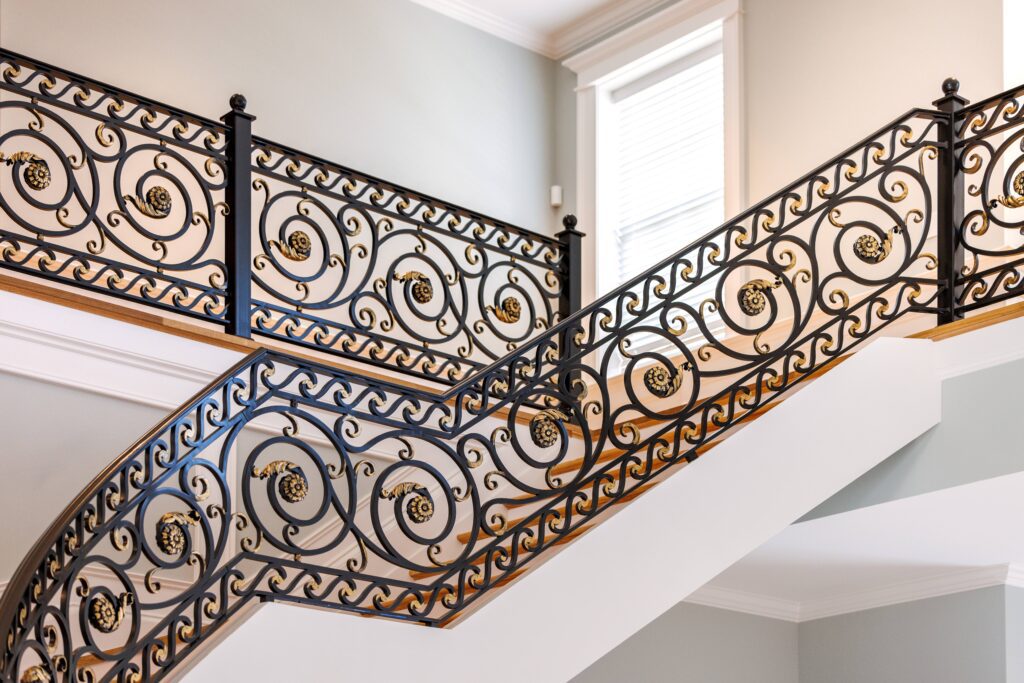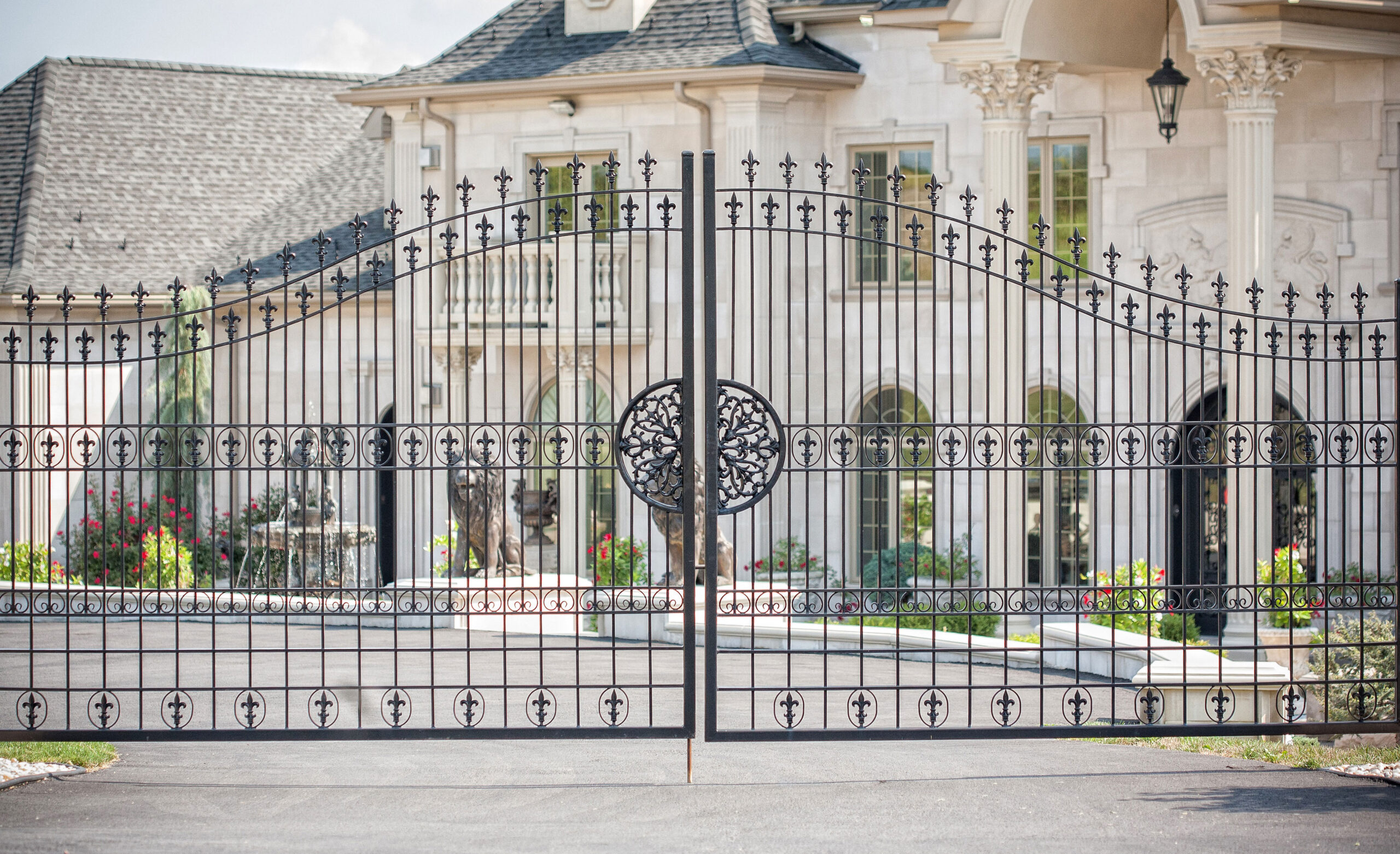Radial Staircase, Spiral Staircase, Helical Staircase, or is it something else?
One person might call it a spiral staircase. Another says it’s helical. Someone else just calls it a “staircase with a curve in it.” With so many design possibilities today, it’s easy to get confused about what distinguishes one metal staircase from another.
To clear things up, we’re breaking down the differences between Radial, Spiral, and Double Helical staircases. This isn’t an exhaustive list of every custom option, but it’s a solid foundation for understanding the basic types—and how each creates a unique visual and functional experience.
Custom Radial Staircase
While the term radial could technically describe any staircase with a radius, in our design vocabulary, a Radial Staircase is one that curves but does not complete a full helical rotation as it ascends from one level to another.
These stairs are highly adaptable and can be engineered with several structural systems: single stringer, dual stringer, interior or exterior ribbon supports, or even cantilevered treads. Each configuration can drastically alter the overall style—from modern minimalism to bold sculptural statements—yet all radial staircases share two constants: they are comfortable to walk on and architecturally stunning.
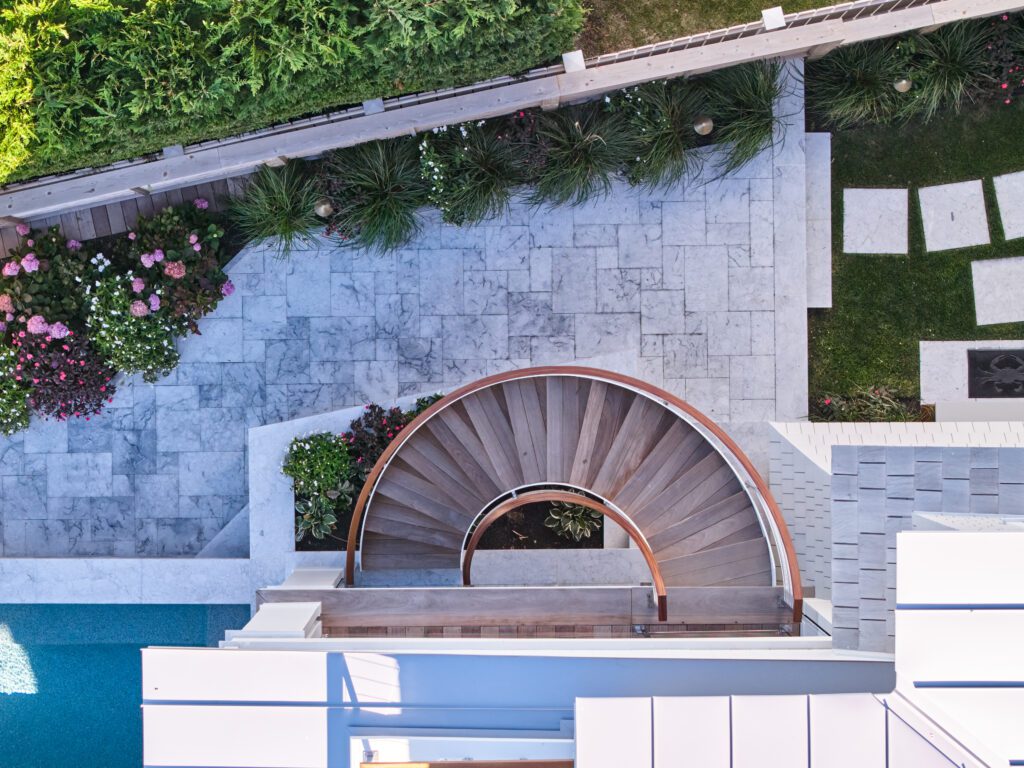

Custom Spiral Stairs
Spiral staircases are a popular choice for accessing upper levels without sacrificing valuable floor space. Their compact footprint makes them ideal for tight locations or modern layouts where every square foot matters.
These stairs feature a central structural post around which the treads rotate. The inner radius of each tread attaches to this center post, while the outer edge is connected via a railing or exterior ribbon structure. This classic design is as efficient as it is visually dynamic, allowing vertical circulation in a small, elegant footprint.
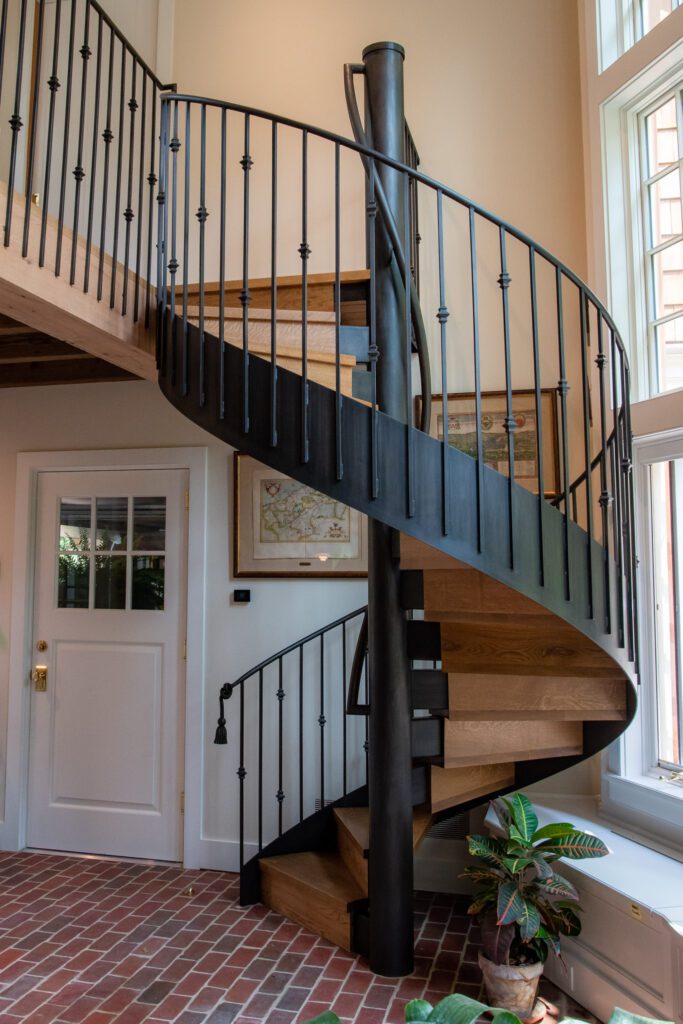
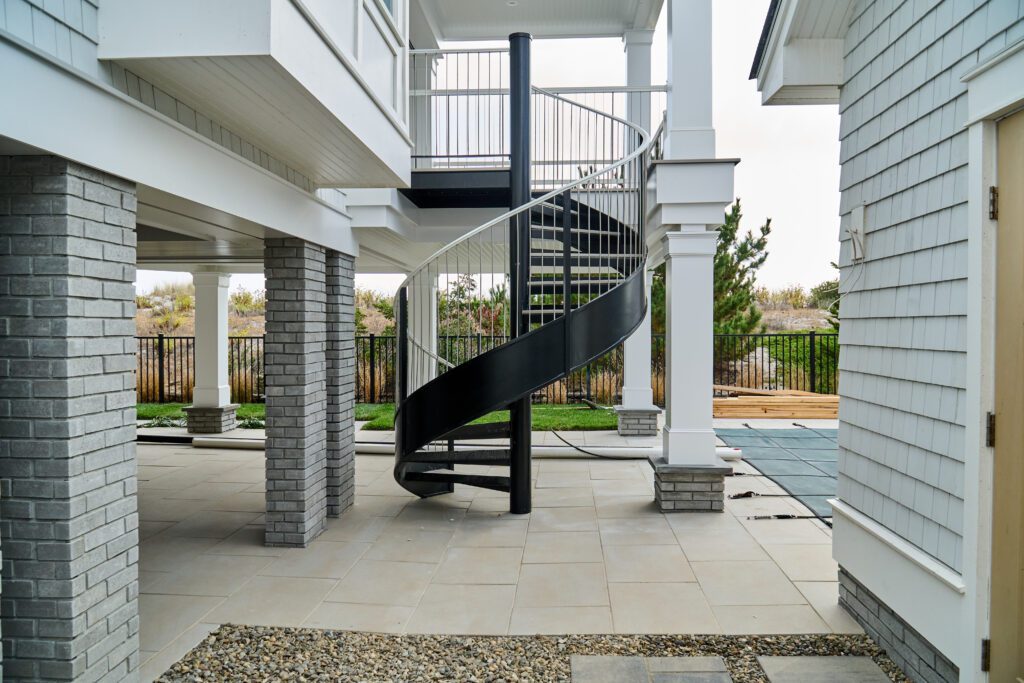
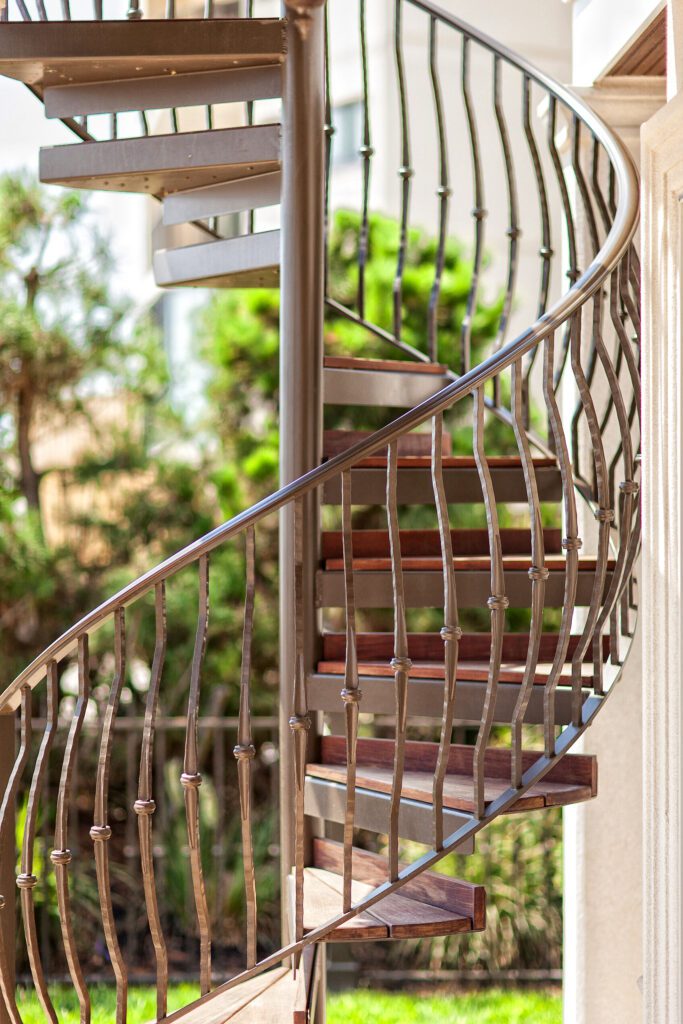
Custom Double Helical Stairs
At first glance, a Double Helical Staircase may resemble a spiral stair—but look closer, and the differences are significant.
Like a spiral, it completes a full helical rotation from floor to floor. However, it does not use a center post. Instead, the structure is supported by a curved interior radius ribbon, which opens up the central space, resulting in wider walk paths and greater comfort during ascent and descent of the stair.
This design isn’t just an engineering upgrade—it’s a visual one, too. Without a central post, the stair feels more open, airy, and fluid. Think of the Double Helical Stair as the luxury version of a spiral stair—more sculptural, more walkable, and often chosen for high-end architectural applications where both elegance and innovation are desired.
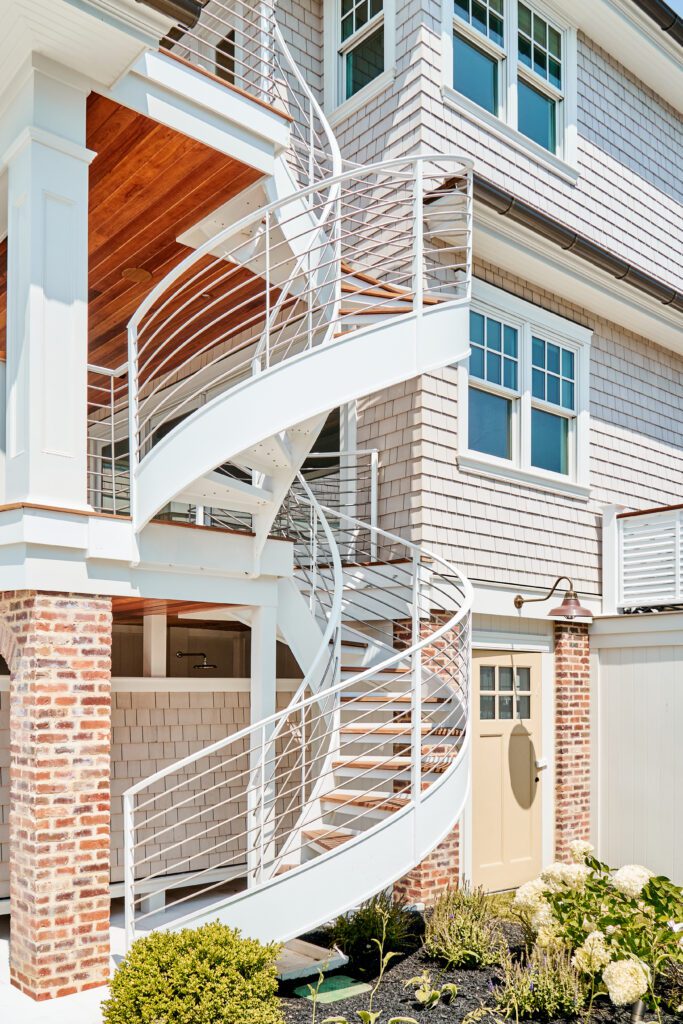

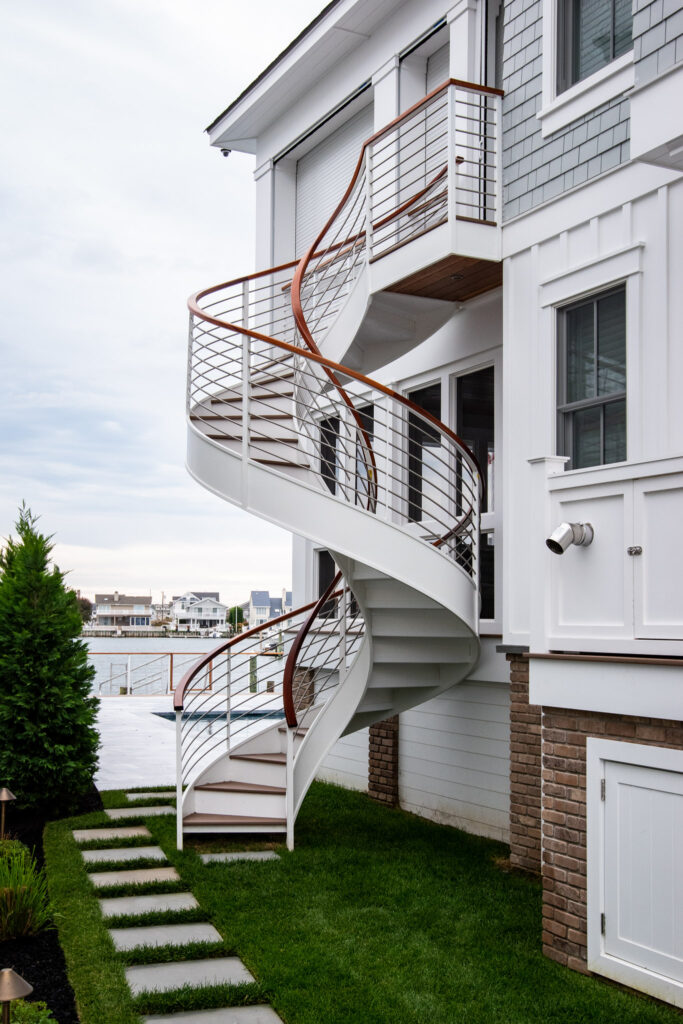
The “Something Else” Staircase
Every now and then, we’re asked to design something that doesn’t neatly fit into any defined category. These staircases go beyond the expected and start to function more like architectural sculptures—with their primary purpose being to captivate, and their secondary purpose to be climbed.
These designs often resemble solid ribbons or free flowing forms, acting as bold centerpieces in a home or commercial space. They transcend the typical “staircase” and enter the realm of artistic expression, while still fulfilling all the needs of a staircase.
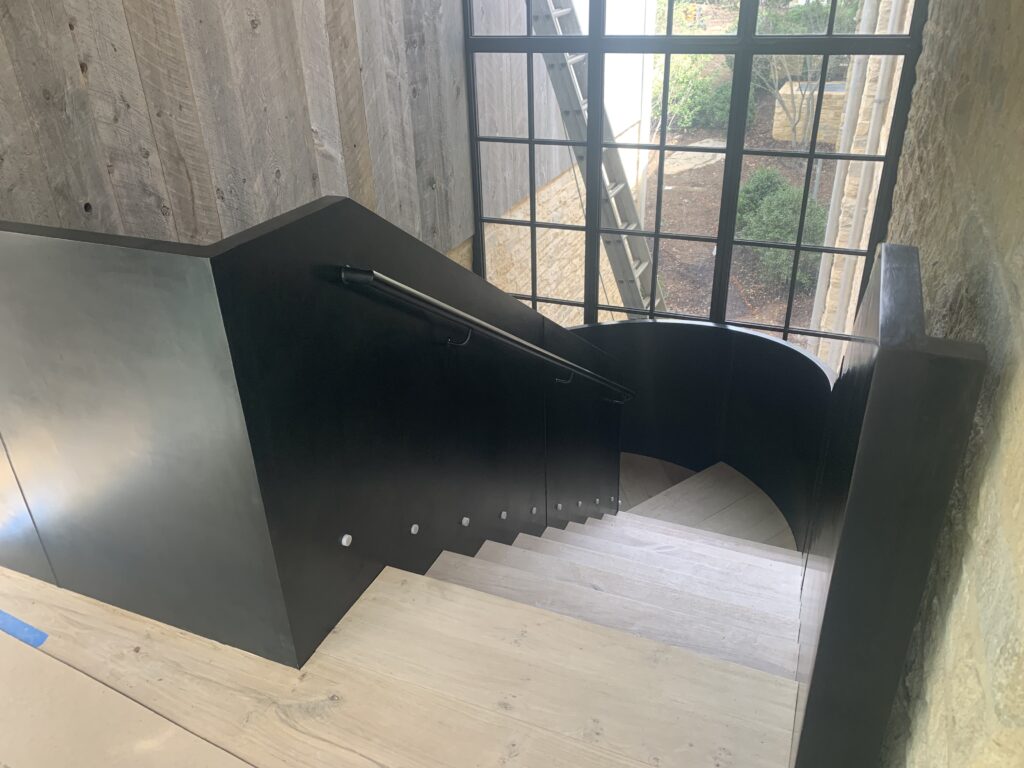
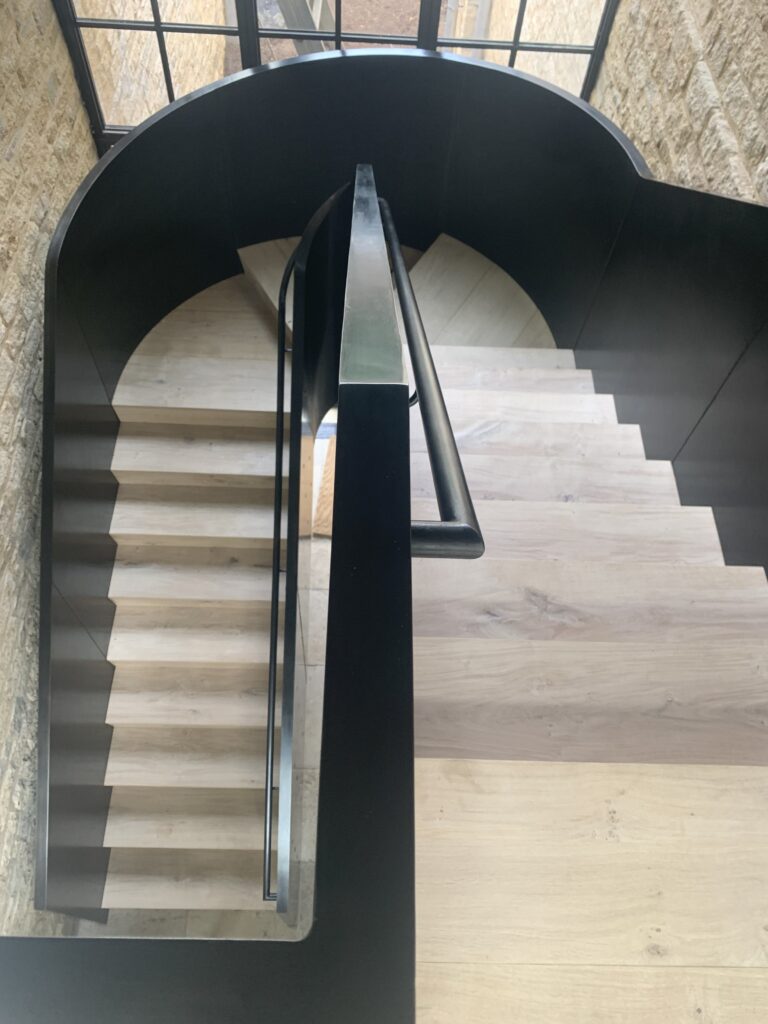
Case Study: “C”-Shaped Radial Staircase
In a recent project, we were presented with a unique challenge. The client needed a stair that fit within tight property lines and setbacks—without compromising on design.
The result? A “C”-shaped radial stair that began with a short straight run, curved, straightened again, curved once more, and finally connected to a second-level deck. It wasn’t fully radial, nor straight—but rather a purpose-built hybrid, engineered to meet the client’s exact spatial and aesthetic needs. This solution to the client’s problem was resolved through a bit of innovation, and brought on a stair design that was functional, beautiful, and one-of-a-kind!
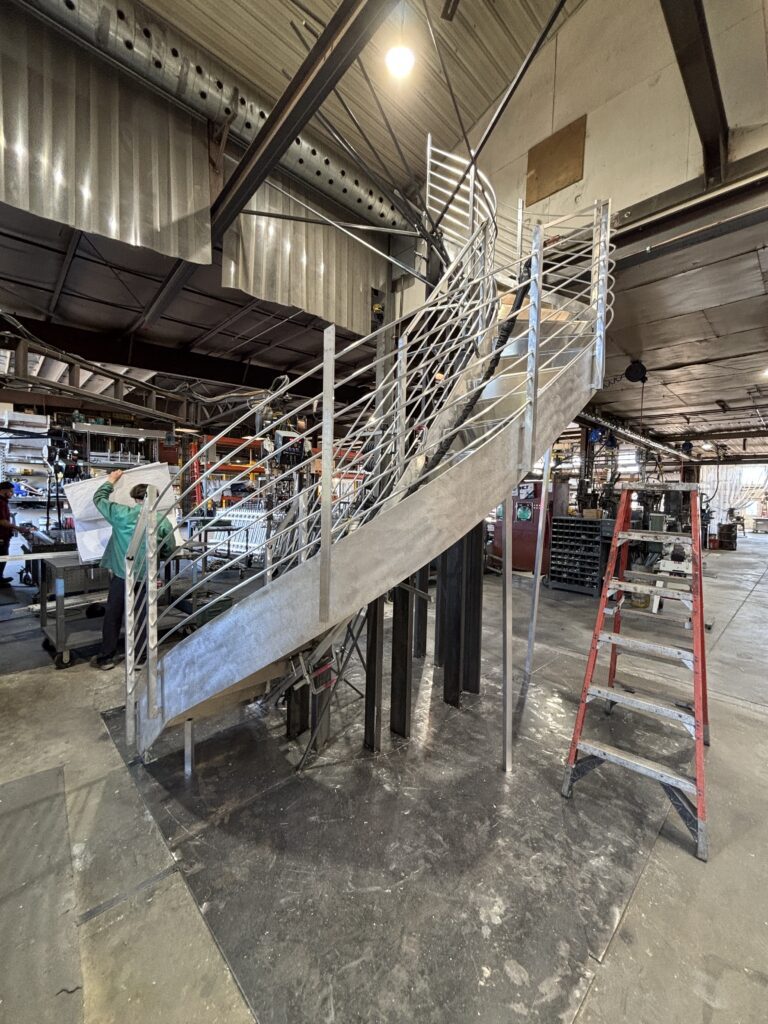
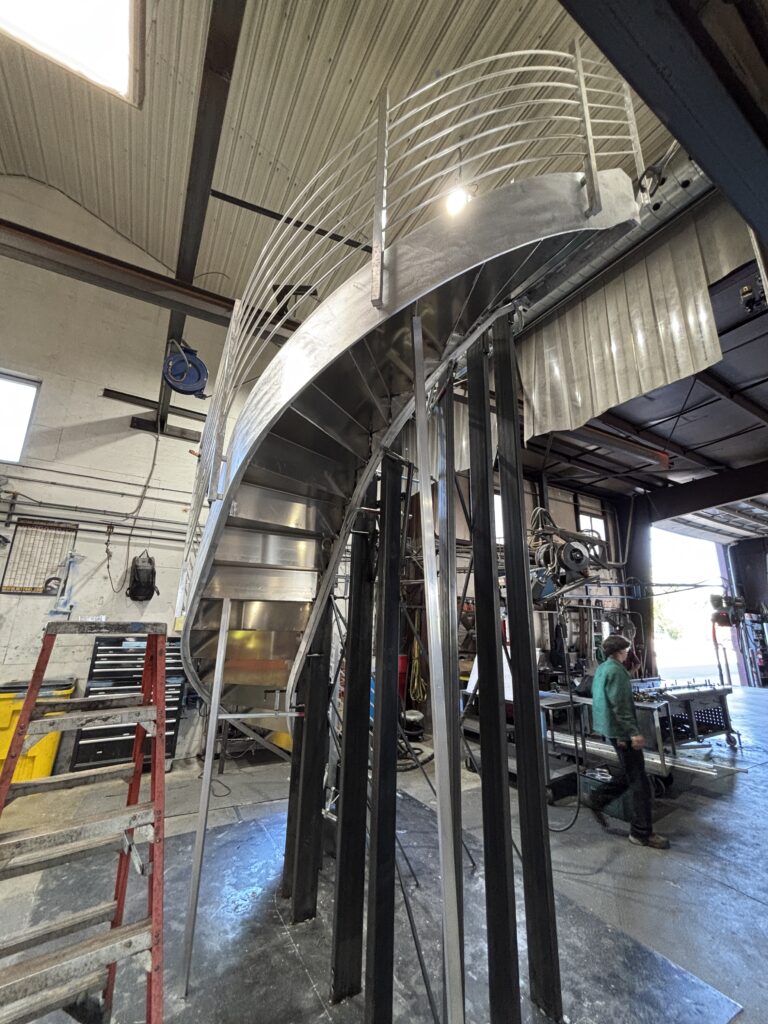
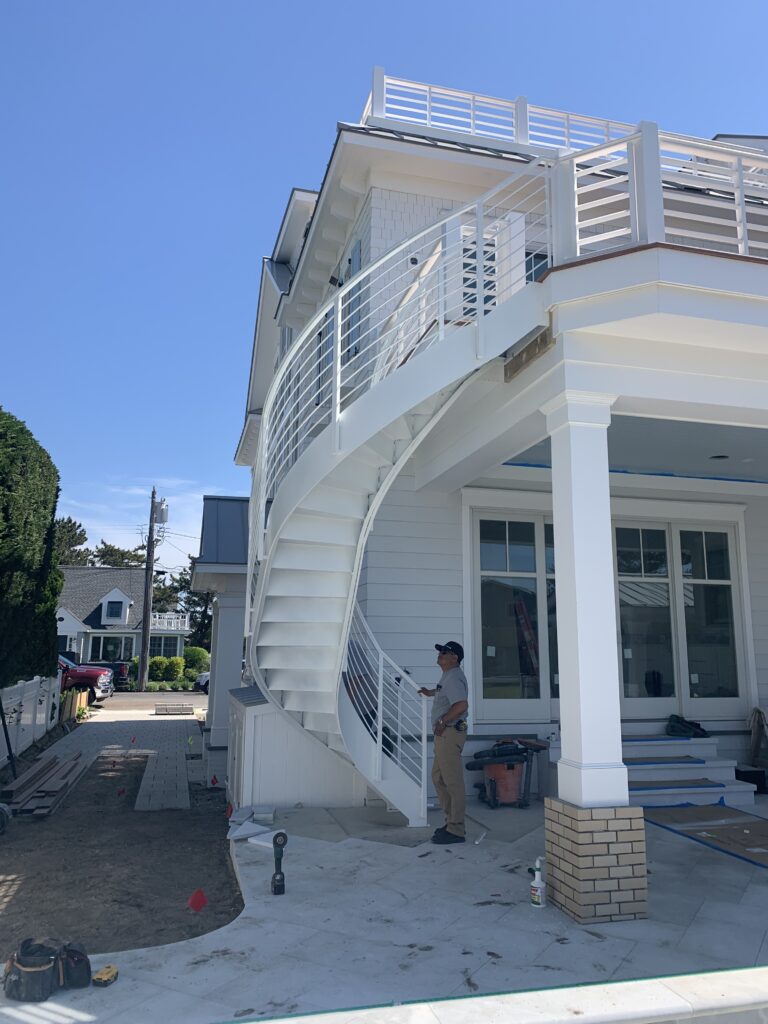
In Summary
With so many ways to bend, twist, and reimagine the staircase, it’s no wonder the terminology can be confusing. Whether it’s a radial, spiral, double helical, or a completely custom sculptural stair, understanding the core differences can help you better identify (and design) the staircase that’s right for your space.
When form and function meet in the right way, the result isn’t just a way to get upstairs—it’s a statement. Allow us to assist you in designing and building your next luxury staircase!
